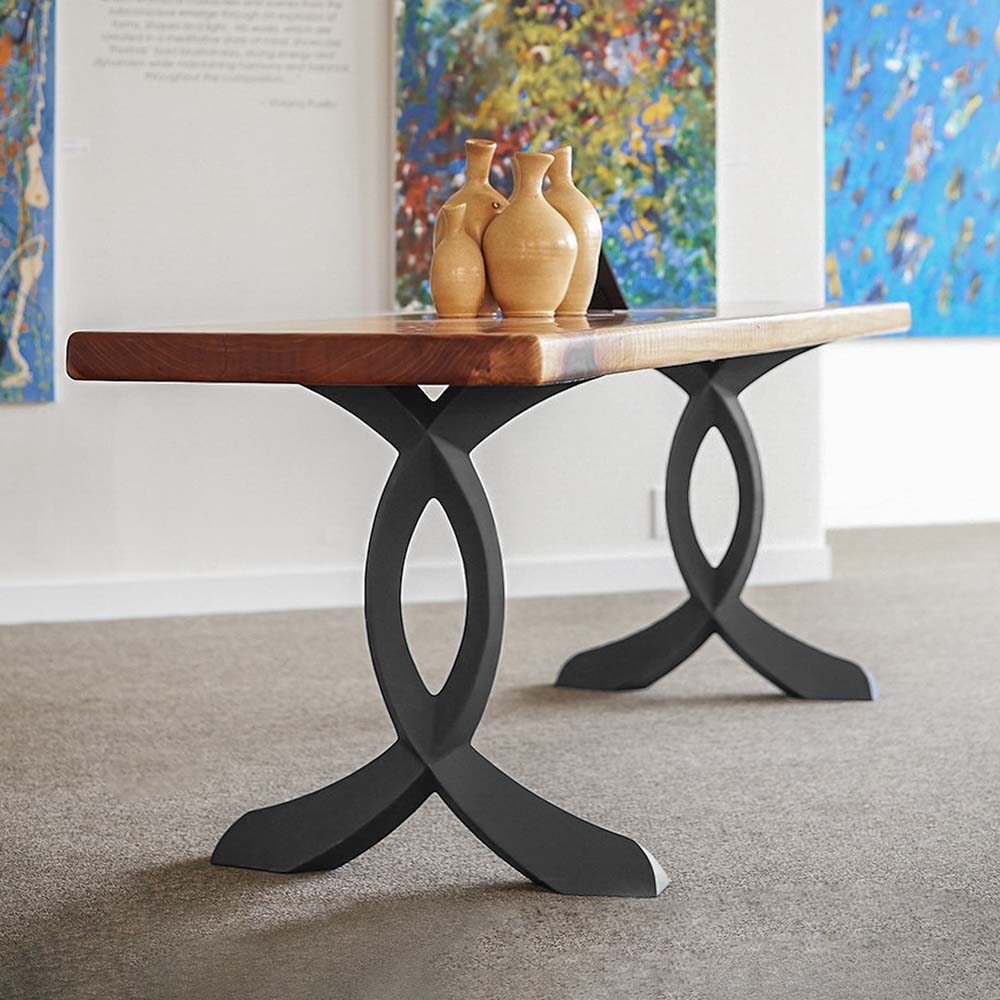Discover the most effective Products for Dining Room Table Legs for each Style
Discover the most effective Products for Dining Room Table Legs for each Style
Blog Article
Table Legs: How to Select the very best Designs for Your Room
Selecting the ideal table legs is vital for both aesthetic and practical consistency in your eating room. Whether your area boasts a sleek, modern-day vibe or leans towards a much more conventional setting, the design of the legs can considerably influence the overall look. Conical legs show contemporary sophistication, while turned legs supply a nod to classic appeal. Beyond style, the product-- be it cozy timber or streamlined metal-- plays a crucial function in setting the tone. Yet how do you ensure these elements complement your existing decoration while supplying the needed stability? The answer hinges on a balanced strategy.
Analyzing Your Eating Space Design
How do you figure out the ideal dining table legs for your room? The answer starts with a comprehensive assessment of your dining-room style. A cohesive design makes sure that your table legs boost the total visual instead of clash with existing elements. Beginning by observing the building functions of your dining-room. Are there famous features such as revealed beam of lights, complex moldings, or minimalist lines? These information often dictate whether a conventional, rustic, modern, or commercial design is most suitable.
Next, take into consideration the existing furniture and style. The materials, colors, and appearances within the area play an essential function. An eating area with streamlined, modern chairs and metal accents might benefit from easy, structured table legs. Alternatively, an area filled up with vintage pieces and abundant textiles might ask for luxuriant, sculpted legs.
Lighting likewise influences understanding. Natural light can emphasize particular products and finishes, while synthetic lighting can highlight different aspects. Account for the space's scale and proportions. Huge, open dining-room can accommodate heavier, much more considerable legs, whereas smaller areas need more fragile, inconspicuous styles. By meticulously reviewing these variables, you can select table legs that sympathetically blend with your dining-room's style.
Popular Leg Styles Discussed

One prevalent design is the tapered leg, renowned for its streamlined, modern-day look. Next off, the turned leg features intricate spindle-like designs, commonly located in typical and farmhouse settings.
Cabriole legs, with their unique contours, are synonymous with French Provincial and Queen Anne furniture. Their stylish, moving lines bring a feeling of elegance and historical appeal (dining room table legs). For those preferring a durable and straightforward design, square legs supply tough support and a clean, geometric appearance, suitable for commercial or minimal rooms
Last but not least, hairpin legs provide a retro, mid-century contemporary vibe. article Made from steel, these legs are both light-weight and strong, including an unique visual contrast to wooden tabletops. Understanding these styles will additional hints direct you in choosing table legs that improve your space's visual and capability.
Product Factors To Consider

Timber is a classic choice, recognized for its warmth and adaptability. It can be found in various types such as oak, walnut, and maple, each offering unique grain patterns and colors. Steel legs, often made from stainless steel, iron, or light weight aluminum, give a modern and commercial appearance while ensuring robust support. They are commonly more resistant to use and tear, making them a sturdy choice.

Various other materials like bamboo or rattan supply green options, bringing an all-natural and unwinded ambiance to the dining area. Each product has its advantages and disadvantages, and the most effective choice will certainly depend on your particular demands and preferences.
Balancing Visual Appeals and Capability
Achieving the best equilibrium between aesthetic appeals and capability is necessary when selecting eating table legs. While the visual charm of table legs can dramatically boost the total ambiance of a dining area, their useful aspects can not be neglected. The design of the legs have to harmonize with the room's decoration, yet they must additionally provide sufficient support and security for the table.
Take into consideration the building design of your space. Sleek, contemporary interiors may take advantage of minimal, steel legs that supply a tidy and inconspicuous appearance. On the various other hand, traditional settings frequently match turned or carved wooden legs that add a touch of beauty and elegance.
Performance includes the stability and toughness of the legs. Trestle legs, known for their robustness, can provide solid assistance for larger tables, making them optimal for households or frequent entertainers. Conversely, pedestal additional hints legs can supply even more legroom and versatility, enabling for better seats setups
Additionally, the height and positioning of the legs are essential for comfortable eating. Legs put too much internal may impede seats, while those as well close to the side can restrict motion. Thus, thoughtful factor to consider of both aesthetic and functional components is vital for an optimal eating experience.
Personalization and DIY Options
Personalization opens up a realm of opportunities for developing dining table legs that are distinctively customized to your preference and needs. Certain layout elements, such as turned legs, tapered forms, or detailed carvings, can be integrated to show your design.
For those likely towards do-it-yourself (DIY) tasks, developing custom dining table legs uses both a fulfilling experience and the opportunity to accomplish a bespoke visual. Do it yourself fanatics can resource raw materials and utilize woodworking or metalworking tools to craft legs that satisfy exact requirements. In addition, numerous online tutorials and workshops offer assistance, making the procedure a lot more obtainable for newbies.
Inevitably, whether opting for professional customization or embarking on a DIY venture, the ability to tailor dining table legs ensures that the final item integrates with your interior decoration vision, boosting both performance and visual charm.
Final Thought
Selecting the appropriate eating table legs requires mindful consideration of the overall design of the dining area, including existing building functions and furnishings. Eventually, the chosen table legs must complement the style, offering both aesthetic charm and sensible support.
Report this page